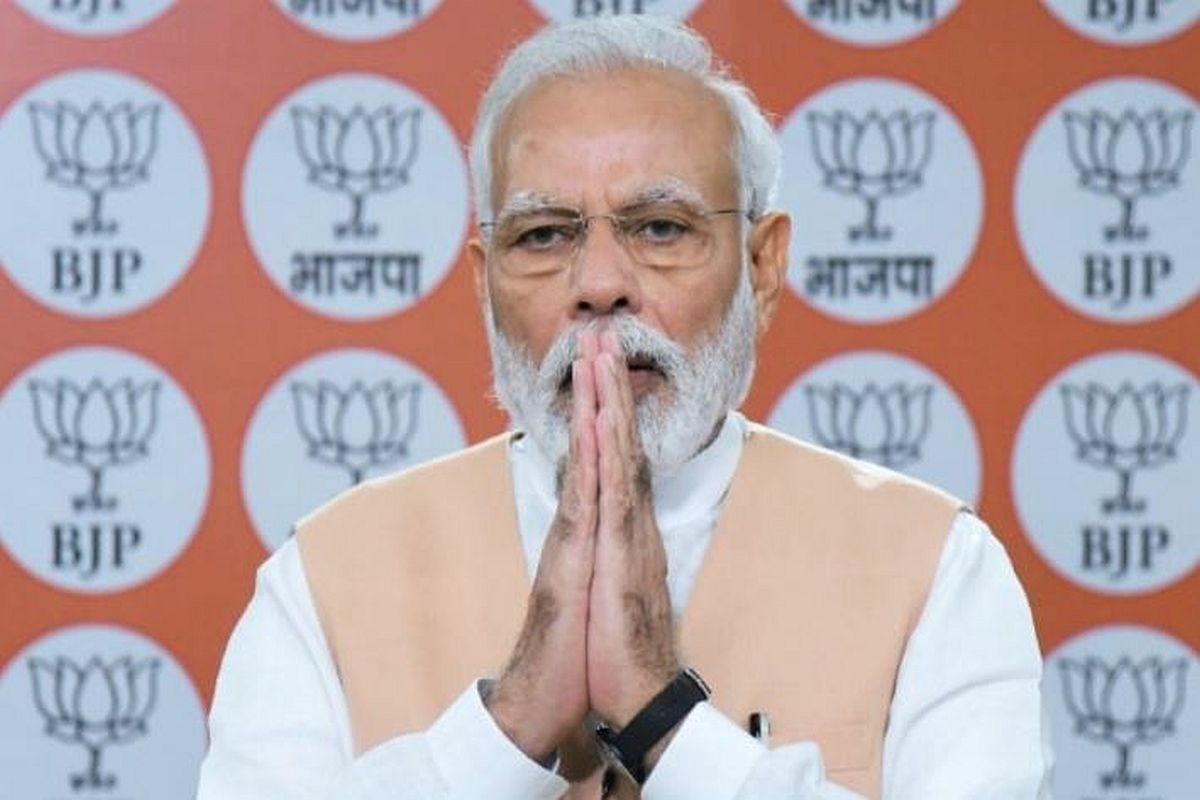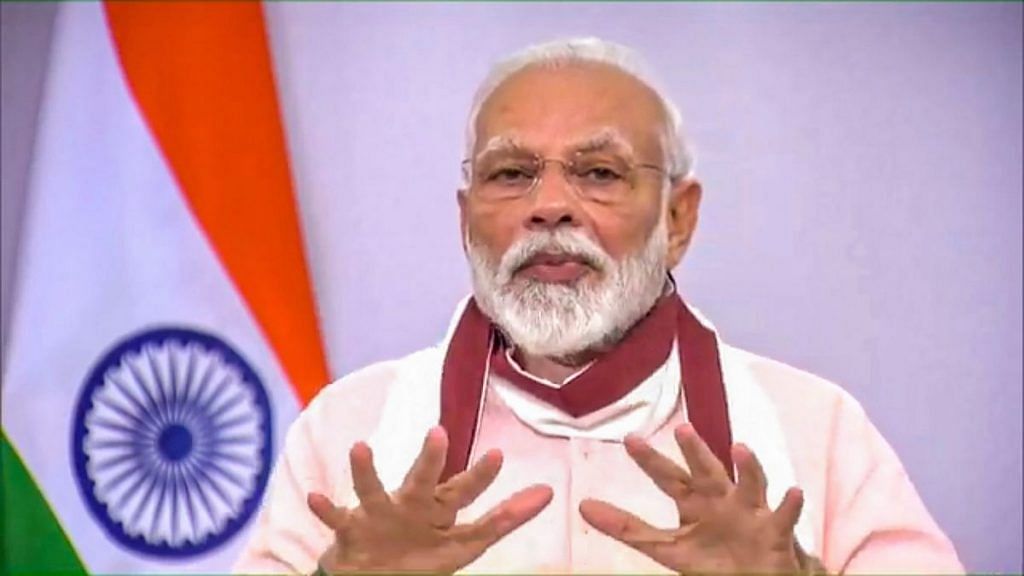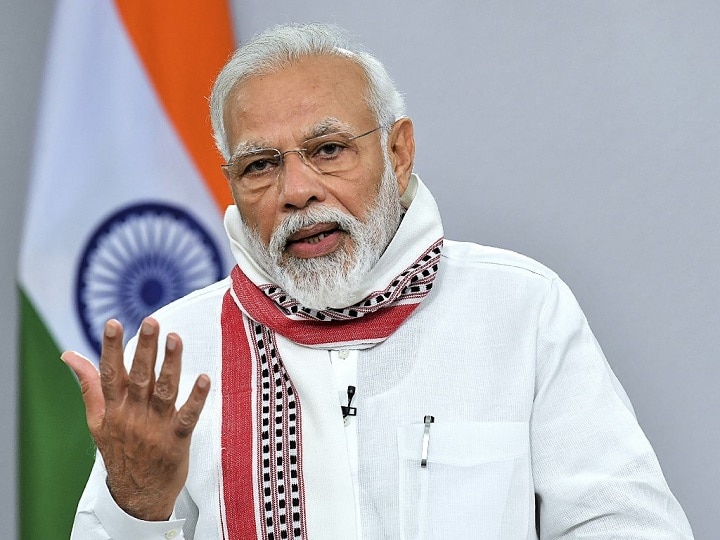PM Modi’s Alluring Offer: Chip Firms Enticed with 50% Aid Plan

PM Modi’s Alluring Offer: Chip Firms Enticed with 50% Aid Plan
Prime Minister Narendra Modi has dispelled any doubts about India’s commitment to becoming a significant player in the global semiconductor value chain. On Friday, he emphasized that the country is diligently working to establish a comprehensive ecosystem to foster the growth of the semiconductor industry. India aims to play a crucial role as a “grand conductor” in attracting investments to the sector.
To accelerate the development of the semiconductor sector, the Indian government is actively implementing policy reforms. Prime Minister Modi reiterated the government’s commitment to promoting domestic chip manufacturing, offering specific incentives to support this endeavor. One notable incentive includes uniform fiscal support of 50% across all technology nodes, providing a level playing field for the industry’s growth.
The government’s push to promote semiconductor manufacturing in India aligns with the global demand for advanced chips, which are vital components used in various industries, including consumer electronics, telecommunications, automotive, and more. By bolstering its domestic semiconductor capabilities, India aims to reduce its dependence on imports and become more self-reliant in meeting its technological needs.

Prime Minister Narendra Modi addressed the SemiconIndia annual conference in Gujarat, where several semiconductor industry executives, including Foxconn chairman Young Liu, were in attendance. During the event, Modi highlighted India’s commitment to fostering a sustainable semiconductor and display ecosystem in the country.
To support the growth of the semiconductor industry, the Indian government had cleared a $10 billion incentive package in December 2021. This package aims to encourage the development of various components in the semiconductor value chain, including silicon semiconductor fabs, display fabs, compound semiconductors, silicon photonics, sensors, and semiconductor packaging and design. The incentives are designed to attract investments and accelerate the establishment of a robust semiconductor ecosystem in India.
However, there have been recent setbacks, such as Foxconn’s decision to withdraw from a $19.5 billion chip joint venture with Vedanta, citing slow progress in the project. Additionally, Israel’s Tower Semiconductor’s plan to invest $3 billion in a chip unit in India has also stalled, raising concerns about the progress of India’s semiconductor plans.
The semiconductor industry in India received a significant boost at the SemiconIndia annual conference in Gujarat, with notable announcements from major players in the field. Foxconn chairman Young Liu shared that the world’s largest electronics manufacturer would now pursue its India plans independently and invest $2 billion over the next five years. This substantial investment demonstrates Foxconn’s commitment to strengthening its presence in India and contributing to the growth of the semiconductor ecosystem in the country.

Additionally, US chip maker Advanced Micro Devices (AMD) also made a significant commitment to India’s semiconductor development. AMD announced investments of $400 million over the next five years and revealed plans to establish its largest design center in Bengaluru. This move further cements India’s position as a strategic destination for semiconductor companies looking to expand their operations and leverage the country’s talent pool and potential.
The Indian government’s incentive package and policy reforms have created a conducive environment for semiconductor investments, attracting the attention of global players like Foxconn and AMD. Prime Minister Narendra Modi expressed confidence in the industry’s prospects, predicting “exponential growth in India.” With these substantial investments and commitments from industry giants, India’s semiconductor sector is poised for significant advancement in the coming years.
Prime Minister Narendra Modi expressed immense confidence in India’s semiconductor sector and showcased the country as a highly attractive destination for semiconductor investments. He highlighted the remarkable progress made by the Indian semiconductor industry, transforming it from a hesitant prospect for investment a year ago to a compelling opportunity now. India’s reputation as a trusted and reliable player in the global chip supply chain has gained recognition, making it an appealing choice for semiconductor companies worldwide.
To support the growth of the semiconductor industry and nurture local talent, the Indian government has taken proactive measures. The prime minister revealed that approximately 300 colleges in India have been identified for introducing courses on semiconductor design. This initiative will help develop a skilled workforce with expertise in semiconductor technology, catering to the growing demand for semiconductor professionals.

Prime Minister Modi drew parallels between India’s aspirations and the ongoing Industry 4.0, emphasizing that during each industrial revolution, the foundation was laid by the ambitions and aspirations of the people in a particular region. He likened the rise of India’s semiconductor industry to the spirit of the American dream during the first industrial revolution, emphasizing that Indian aspirations are driving the country towards prominence in the fourth industrial revolution.
Foxconn, one of the world’s largest electronics manufacturers, is actively exploring the possibility of establishing a new chip plant in Gujarat, India. Additionally, the company is in discussions for a potential $200 million components plant in Tamil Nadu, where it already assembles Apple’s iPhones. These ventures signal Foxconn’s commitment to expanding its operations in India and tapping into the country’s burgeoning semiconductor market.
Currently, global chip production is predominantly concentrated in Taiwan. However, India’s semiconductor industry is poised for significant growth, with experts projecting the market to reach $80 billion by 2028, nearly four times its current size. This growth presents a substantial opportunity for India to enhance its semiconductor capabilities and become a major player in the global chip supply chain.
Investments in chipmaking ventures in India are expected to create job opportunities, particularly for the country’s youthful population. During the SemiconIndia annual conference, Micron Technology CEO Sanjay Mehrotra announced plans for a $2.7 billion semiconductor testing and packaging unit in Gujarat. This project is estimated to generate around 5,000 jobs in the state, contributing to economic development and empowering the local workforce.

As more companies like Foxconn and Micron Technology show interest in establishing semiconductor facilities in India, the country’s vision of becoming a key player in the semiconductor industry is rapidly materializing. The Indian government’s support through policy reforms and incentives, coupled with strategic investments from global industry leaders, is propelling India’s semiconductor sector toward exponential growth.
By developing a robust semiconductor ecosystem and fostering technological innovation, India can harness the potential of the fourth industrial revolution and assert its position as a trusted and reliable player in the chip supply chain. These developments hold promise for India’s economic growth, job creation, and global standing in the semiconductor value chain.




